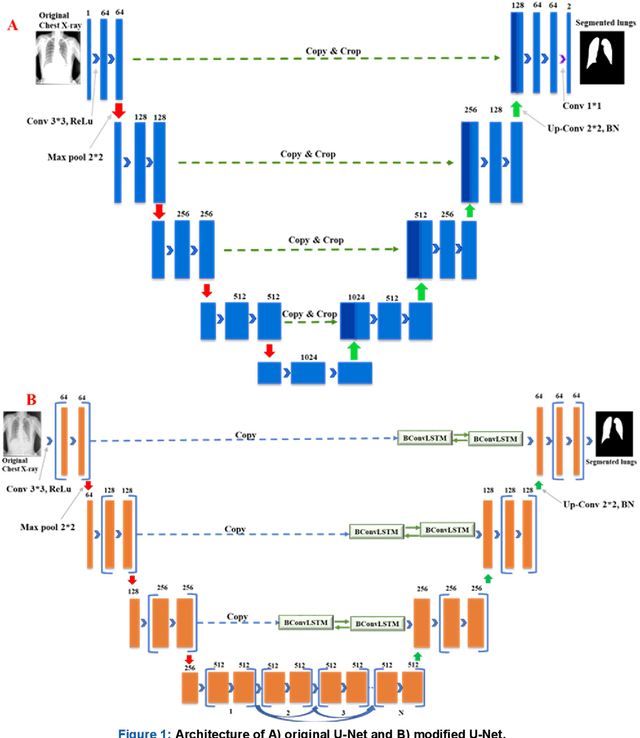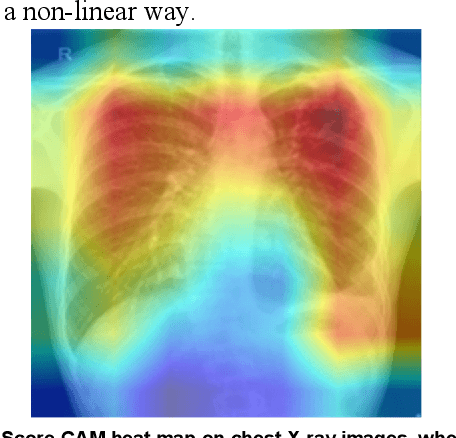Khandaker F. Islam
Reliable Tuberculosis Detection using Chest X-ray with Deep Learning, Segmentation and Visualization
Jul 29, 2020



Abstract:Tuberculosis (TB) is a chronic lung disease that occurs due to bacterial infection and is one of the top 10 leading causes of death. Accurate and early detection of TB is very important, otherwise, it could be life-threatening. In this work, we have detected TB reliably from the chest X-ray images using image pre-processing, data augmentation, image segmentation, and deep-learning classification techniques. Several public databases were used to create a database of 700 TB infected and 3500 normal chest X-ray images for this study. Nine different deep CNNs (ResNet18, ResNet50, ResNet101, ChexNet, InceptionV3, Vgg19, DenseNet201, SqueezeNet, and MobileNet), which were used for transfer learning from their pre-trained initial weights and trained, validated and tested for classifying TB and non-TB normal cases. Three different experiments were carried out in this work: segmentation of X-ray images using two different U-net models, classification using X-ray images, and segmented lung images. The accuracy, precision, sensitivity, F1-score, specificity in the detection of tuberculosis using X-ray images were 97.07 %, 97.34 %, 97.07 %, 97.14 % and 97.36 % respectively. However, segmented lungs for the classification outperformed than whole X-ray image-based classification and accuracy, precision, sensitivity, F1-score, specificity were 99.9 %, 99.91 %, 99.9 %, 99.9 %, and 99.52 % respectively. The paper also used a visualization technique to confirm that CNN learns dominantly from the segmented lung regions results in higher detection accuracy. The proposed method with state-of-the-art performance can be useful in the computer-aided faster diagnosis of tuberculosis.
Transfer Learning with Deep Convolutional Neural Network (CNN) for Pneumonia Detection using Chest X-ray
Apr 14, 2020



Abstract:Pneumonia is a life-threatening disease, which occurs in the lungs caused by either bacterial or viral infection. It can be life-endangering if not acted upon in the right time and thus an early diagnosis of pneumonia is vital. The aim of this paper is to automatically detect bacterial and viral pneumonia using digital x-ray images. It provides a detailed report on advances made in making accurate detection of pneumonia and then presents the methodology adopted by the authors. Four different pre-trained deep Convolutional Neural Network (CNN)- AlexNet, ResNet18, DenseNet201, and SqueezeNet were used for transfer learning. 5247 Bacterial, viral and normal chest x-rays images underwent preprocessing techniques and the modified images were trained for the transfer learning based classification task. In this work, the authors have reported three schemes of classifications: normal vs pneumonia, bacterial vs viral pneumonia and normal, bacterial and viral pneumonia. The classification accuracy of normal and pneumonia images, bacterial and viral pneumonia images, and normal, bacterial and viral pneumonia were 98%, 95%, and 93.3% respectively. This is the highest accuracy in any scheme than the accuracies reported in the literature. Therefore, the proposed study can be useful in faster-diagnosing pneumonia by the radiologist and can help in the fast airport screening of pneumonia patients.
 Add to Chrome
Add to Chrome Add to Firefox
Add to Firefox Add to Edge
Add to Edge